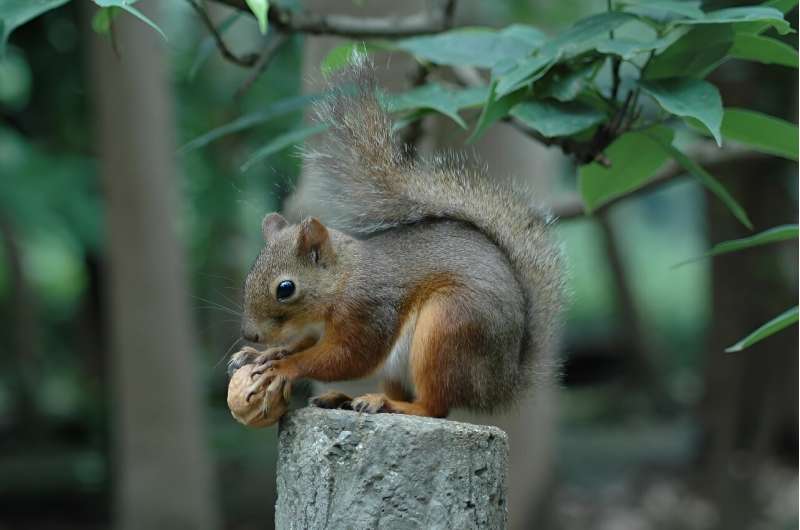Reports of bald eagles dying from lead ammunition poisoning continue as populations of the formerly endangered bird soar.
Bald eagle exposure to the pesticide DDT caused potential extinction a half century ago. And while the birds are no longer endangered and populations are still increasing, researchers say lead poisoning is taking a chunk of some of that growth—almost 4% to 5% annually.
While the population remains more or less stable locally, a host of unpredictable environmental variables could tip that.
“From the rehabbers’ perspective, the overall eagle population is strong, but we have environmental issues going on and we are concerned,” said Carol Holmgren, executive director and principal licensed wildlife rehabilitator at Tamarack Wildlife Center in Crawford County, Pennsylvania, which treats bald eagles as well as other raptors and wildlife.
Eagles consume lead mostly through animal carcasses and gut piles with lead ammunition. A lead bullet fragment the size of a grain of rice is sufficient to kill a bald eagle, Holmgren said.
At Tamarack, lead poisoning accounts for about one-third of its bald eagle caseload.
Studies show decline
Ingesting lead fragments in carcasses depressed the bald eagle population by about 5% annually in Northeastern states from 1990–2018, per a Cornell study, published in 2022 in the Journal of Wildlife Management.
A separate study, published the same year in the journal Science, found that about 47% of bald eagles had high frequencies of lead poisoning in 38 states, including Pennsylvania. The report suggests lead poisoning-suppressed population growth rates continent-wide for bald eagles up to almost 4%.
Lead poisoning has suppressed population growth rates for bald eagles across North America by almost 4%, according to the report.
This is concerning news for the comeback of the charismatic raptor, from near-extinction to one of the country’s most successful conservation stories.
“With the PA population continuing to expand, it is hard to say how lead may be impacting the PA population of bald eagles,” said Sean Murphy, state ornithologist for the Pennsylvania Game Commission.
The commission examined 228 bald eagles in Pennsylvania from 2006–2016 and found 30% had lead in their systems, Murphy said.
The two national studies used different data and came to the same conclusion: Lead poisoning impacts the bald eagle population, said Krysten Schuler, a Mt. Lebanon native and co-author of the Cornell study.
“For us in the science community, we knew that lead kills eagles but we wanted to know what it is doing to the population overall,” said Schuler, a Cornell assistant researcher and wildlife disease ecologist who directs the Cornell Wildlife Health Lab.
Cornell’s finding of lead taking out 5% of the bald eagle population annually is not enough to stop the population recovery, she said. “It’s like driving forward but having a brake on at the same time.”
The population hit from lead removes a cushion for the birds to weather future threats from new infectious diseases and climate change.
“The concern is continued population resilience,” Schuler said.
Rehabbing poisoned eagles
A fox or a raccoon is not affected by lead as much as eagles and other scavengers, Holmgren said.
With acidic digestive systems that can break down bone, ingested lead is metabolized in bald eagles and sent to the bloodstream and organs, she said.
Last year, Tamarack treated 12 bald eagles with a maximum of seven at one time. Of those, six recovered enough for release back into the wild. Last month, a bald eagle from Crawford County died from lead toxicity at the center.
Treating bald eagles for lead toxicity requires special equipment, and drugs are expensive, costing about $3,000 in the first month and $2,000 in succeeding months, according to Holmgren.
Tamarack recently drew attention—and funds—to its rehabilitation efforts with a naming contest for a bald eagle hatched at a nest on U.S. Steel Irvin Plant property in West Mifflin. The eagle was named Lucky and the April contest helped to raise $7,000 in donations.
Other U.S. Steel fundraisers for Tamarack have netted more than $40,000, helping to pay for an X-ray machine and a generator in the last several years.
Lucky and his parents aren’t just symbols of patriotism but corporate and public intervention to save bald eagles from lead and other hazards.
“For U.S. Steel, we’re trying to put Tamarack on the map. They are doing great work with eagles and raptors and other wildlife,” said Don German, manager of the Irvin Plant, who presents his “Eagle Talks” to schools, libraries and other venues.
The mill, along with PixCams of Murrysville, offers a live public webcam trained on the eagle nest on the steel mill property.
Mr. German often mentions the problem of lead poisoning in bald eagles and continues to promote Tamarack’s work.
“Obviously we are seeing so many more eagles even on our cameras,” he said. “The need for Tamarack and their success with even more eagles, we want to help increase their resources that help with birds’ survival.”
Voluntary lead shot ban?
Since lead ammunition was banned nationally for waterfowl hunting almost 35 years ago, most proposed legislation for additional lead ammunition bans have proven to be political and contentious.
Biologists and hunters are not waiting.
A hunter, Schuler supports the North American Non-lead Partnership. “The major thing we’re trying to say is that lead is a preventable source of eagle mortality,” she said.
Hunters can choose ammunition. “It’s not about taking guns and ammunition away,” she said. “If they harvest a deer or a bear and don’t leave lead out there for scavengers, it is really important.”
The Pennsylvania Game Commission promotes non-lead ammunition and tackle and asks hunters to bury a carcass or gut pile to reduce the chances of a scavenger finding the carcass.
Commission game wardens use non-toxic ammunition for wildlife when necessary.
Holmgren supports the nonprofit Sporting Lead-Free, an initiative of the Teton Raptor Center in Wilson, Wyoming.
“We want to be nonpolitical, just educational,” said Hannah Leonard, program director for Sporting Lead-Free. “We have seen legislation proposed that has a negative impact on the sporting community. There’s so much nuance.”
Some proposed legislation lacks the understanding of the ammunition and tackle market, she said.
“We are not necessarily anti-lead.”
Leonard is a hunter who uses lead shot only for target shooting. Persuading hunters to switch from lead ammunition to something else poses challenges: cost, availability of copper and alternative ammunition, and misconceptions about accuracy.
“Just like everybody’s foot fits a shoe a little differently, same thing with ammunition in your firearm. Every firearm shoots every ammunition a little differently.”
Modern copper ammunition is better than in the 1990s, she insisted. The technology has improved and copper ammunition is more widely available.
Many hunters and anglers don’t know the latest information and products, Leonard said.
“My job is to educate hunters, anglers and the public. We are not shaming people for not knowing something.”
This article by Mary Ann Thomas, Pittsburgh Post-Gazette was first published by Phys.org on 12 July 2024. Lead Image: Credit: Unsplash/CC0 Public Domain.
What you can do
Help to save wildlife by donating as little as $1 – It only takes a minute.







Leave a Reply